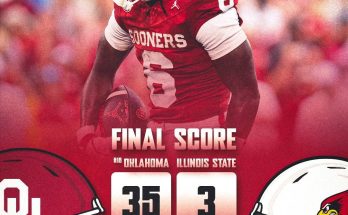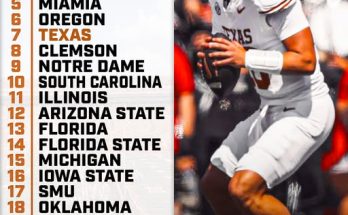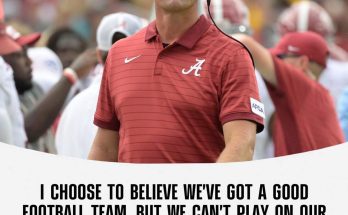When the Chicago Bears made the bold decision to hire Ben Johnson as their head coach, the football world took notice. Known across the NFL as the offensive mastermind who engineered the Detroit Lions’ remarkable offensive resurgence, Johnson was a hot commodity. Teams across the league coveted his services, but it was Chicago—a division rival of the Lions—that ultimately secured his signature. In doing so, the Bears made what could go down as one of the most transformative moves in franchise history. Chicago’s struggles in recent years have been glaring: ineffective offenses, rotating doors at quarterback, and coaching staffs that never quite found their rhythm. But all signs now suggest that the arrival of Johnson might finally give the Windy City a new identity—one built around offensive ingenuity, player development, and modern football philosophy.
What makes Ben Johnson’s arrival so significant is not merely his résumé, but how his style of coaching and strategic intellect align perfectly with what the Bears desperately needed. Johnson rose to prominence as the Lions’ offensive coordinator, helping take Detroit from a laughingstock to a legitimate playoff team. Under his guidance, the Lions went from bottom-feeders in scoring offense to one of the most explosive units in the league. He revitalized Jared Goff’s career, turned unknowns into playmakers, and tailored the offense not to fit a scheme, but to fit his players. This flexibility and player-centric approach earned him widespread praise and made him the most sought-after head coaching candidate during the most recent NFL hiring cycle.
The Chicago Bears, a franchise steeped in defensive tradition, understood that a culture shift was needed. For too long, the team focused on building stout defenses while treating offense as an afterthought. This outdated philosophy couldn’t compete in the modern NFL, where offensive innovation often determines success. Chicago needed someone who could do more than just call plays—they needed a visionary who could instill an identity, develop young talent, and build a culture of accountability and excellence. In Johnson, they appear to have found just that.
One of the most promising signs of Johnson’s early impact has been the rapid improvement of the team’s offensive structure during OTAs and minicamps. Players have openly praised the clarity of his system and his ability to communicate concepts in ways that resonate. The Bears’ quarterback room, long a symbol of instability, has found renewed purpose. Whether it’s a veteran trying to rebound or a young talent hoping to break out, Johnson has made it a priority to build trust with his signal-callers. His reputation as a “quarterback whisperer” wasn’t just media hyperbole—it was rooted in his hands-on, detail-oriented work in Detroit, where he turned Goff into a top-10 passer again after many had written him off.
The decision to bring in Johnson was also strategic in nature. The Bears had the draft capital, salary cap space, and roster flexibility to build around a coach’s vision. Rather than hire a retread or another defensive mind, ownership and GM Ryan Poles went all-in on offensive progress. Johnson didn’t just take the job for the paycheck—he was given the keys to reshape the organization in his image. Early indications suggest he’s wasting no time doing exactly that. From installing a more dynamic passing scheme to refining the run game with pre-snap motions and modern blocking concepts, Johnson has made it clear that the Bears won’t be running the same tired plays that fans have groaned at for years.
One of the biggest beneficiaries of Johnson’s arrival could be the Bears’ young core of offensive weapons. Wide receiver D.J. Moore is coming off a strong season and now finds himself in an offense that can fully unlock his potential. Moore has excelled at creating separation and gaining yards after the catch—two traits Johnson has historically leveraged through creative route combinations and play designs. Add to that a budding receiver in Rome Odunze, a player many consider to have WR1 potential, and suddenly the Bears’ receiving corps is starting to resemble a top-tier unit. Johnson’s understanding of how to manipulate coverages to get his best players open will be pivotal for maximizing their talents.
Tight end Cole Kmet has also taken a noticeable leap in offseason practices. Known for his size and reliability, Kmet could become a cornerstone in Johnson’s offense, similar to how tight ends were used in Detroit—not just as blockers or safety valves, but as key chess pieces in mismatches against linebackers and safeties. Running back Khalil Herbert, who has shown flashes of explosiveness, could flourish in a system that values versatility and zone-blocking schemes, much like what Johnson implemented with the Lions’ backfield rotation. These are not just incremental gains; they are early signs of a fundamental shift in how Chicago views and operates on offense.
Of course, no discussion about the Bears’ future can ignore the quarterback situation. The team has invested heavily in Caleb Williams, the number one overall pick and Heisman-winning quarterback out of USC. Williams brings elite arm talent, mobility, and an uncanny feel for the game, but like any young quarterback, he needs structure, support, and smart coaching. Ben Johnson is perhaps the ideal mentor. His work with Goff, and before that with backup quarterbacks in various roles, showcases his ability to tailor an offense around a player’s strengths. Unlike previous Bears regimes, Johnson isn’t trying to force a square peg into a round hole. He is building the offense around Williams’ natural abilities, encouraging creativity while emphasizing sound decision-making and timing.
The early reviews from inside Halas Hall have been glowing. Williams has reportedly taken to Johnson’s coaching style quickly, soaking in the playbook and showing a command of the offense beyond his years. Teammates have described practices as more “purposeful” and “efficient,” a departure from previous years when the team often seemed directionless on the field. The coaching staff, handpicked by Johnson, also reflects his belief in collaboration and specialization. Rather than rely solely on his own vision, Johnson has empowered assistants to lead in their areas of expertise, ensuring that every aspect of the offense—from quarterback footwork to receiver route precision—is polished and cohesive.
Defense hasn’t been neglected either, though Johnson’s expertise lies on the other side of the ball. He understands that in order to create a winning team, complementary football is key. That means building an offense that can control time of possession, score in the red zone, and avoid turnovers—traits that take pressure off the defense. His approach has earned respect from veteran defenders, many of whom have said they can already feel the difference in how the team practices, communicates, and competes. This ripple effect, where the entire team feels more aligned and energized, is one of the clearest indicators that the Bears might finally have their guy.
Beyond Xs and Os, Johnson brings a leadership style that emphasizes trust, transparency, and adaptability. Players have said that he’s not afraid to admit mistakes or adjust a game plan if something isn’t working. That humility, paired with his deep football knowledge, makes him relatable and respected. In a league where many head coaches become rigid or lose touch with players, Johnson has found the balance between authority and approachability. He challenges his team while also showing them that he believes in their abilities.
That belief is already translating into a renewed sense of hope among fans and analysts alike. The Bears, once viewed as perennial rebuilders, are now being talked about as a potential breakout team. While expectations should remain grounded—after all, success in the NFL takes time—there’s an undeniable buzz surrounding the franchise. Johnson has brought not just a new playbook, but a new attitude. He’s not promising miracles overnight. What he is promising, however, is a team that will play smart, fast, and with purpose.
It’s important to understand just how significant that promise is. In the long history of Bears football, offensive competence has often been elusive. The last time the team had a consistent, high-performing offense was decades ago. And yet, the league has evolved, rewarding teams that can light up the scoreboard and adapt to ever-changing defenses. The Bears knew they needed to evolve too. In Ben Johnson, they found a coach who understands that evolution isn’t just about calling plays—it’s about reshaping how an organization thinks, teaches, and grows.
Whether Johnson can bring the Bears back to championship contention remains to be seen. The NFC North is no cakewalk, with teams like the Packers and Lions still fielding competitive rosters. But what separates this Bears team from past iterations is that for the first time in a long time, there is a clear and compelling vision. The pieces are beginning to fit. The quarterback is in place. The weapons are being utilized properly. And above all, there is a coach who sees football as both art and science—someone who knows that great offenses are not just built, they are cultivated through trust, detail, and relentless adaptation.
As the regular season approaches, all eyes will be on Chicago. Not because anyone is predicting a Super Bowl run just yet, but because people want to see what a Ben Johnson-led Bears team looks like when the lights come on. Will the offense maintain its early promise? Can Johnson translate his success in Detroit into wins in Chicago? Will Caleb Williams thrive under his guidance? These questions will begin to be answered soon, but the groundwork is already laid.
And for a fanbase that has suffered through years of disappointment and mediocrity, that foundation means everything. It means that the Chicago Bears are finally moving with direction and intent. It means they are no longer trying to copy past formulas but are instead writing a new one. It means that Ben Johnson—offensive mastermind, teacher, and leader—is now the face of the future. And if early signs hold true, that future looks bright.



